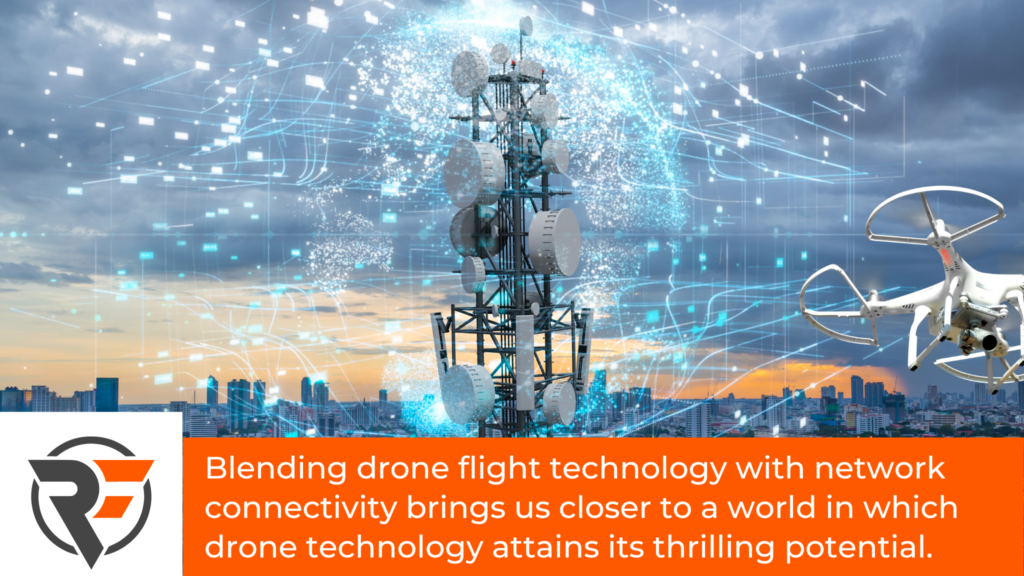GSMA, the association that represents the interests of both mobile operators and the broader mobile industry at an international level, joined forces with the Global UTM Association to create the Aerial Connectivity Joint Activity (ACJA), which is a collaborative initiative between the two associations to promote the exchange of information and ideas between the aviation and cellular communications industries.
The newly published report is an extension of the one ACJA published nearly two years ago. It adds additional aspects to the development of different relationships between mobile network operators (MNOs) and advanced air mobility organisations in the past few years. These relationships highlight what telecommunication features are available for the current aviation industry to scale its UAV operations. Organisations can also see this report as an expansion of the foundational knowledge provided in the first version titled, “Network Coverage Service Definition”.
Notable differences between the two reports include the expansion from binary yes and no capabilities to adding a section for “marginal” to show the progression of the industry towards additional features. Another important highlight is also the expansion of mobile data being implemented in risk assessment procedures by using the information on population density to conduct safer airborne operations.
The main questions about cellular and UAV interfacing that the report answers:
- Which parts of the airspace are good enough to establish connectivity?
The main problem for UAV connectivity with cellular networks is that these networks are built to optimise ground activity while UAV operations are almost exclusively located above ground level (with the exception of takeoff and landing).
One of the main challenges that UAS operators will face when developing their BVLOS flight operations in the future is that connectivity mapping before the mission begins will need to be taken into account to ensure that there is a stable connection with the MNO for the entire duration of the flight including signal strength and upholding data integrity. - How are service level agreements (SLAs) set up and monitored?
Because BVLOS flight operations are relatively new, and with the European Union starting with the implementation of U-space happening less than a month from the publication of the report, there is still much work to be done in terms of setting up and monitoring SLAs during airborne operations.
Depending on the organisation, it’s likely that many UAV operators will turn to different U-space service providers (USSPs) with proven software solutions to help set up and monitor these SLAs with different MNOs. AirborneRF has done this through machine learning algorithms that empower deep integrations into cellular networks through automated data exchange processes for BVLOS drone operations at scale. - How are flight path changes made during the flight?
This is one of the main challenges that is currently facing the industry as some uncooperative drones might continue the flight path until a link is re-established with the MNO, which means drone operators need to take a number of different factors into consideration before embarking on a mission:
- Real-time link quality
- Distance from the MNO and the UAV
- Current signal strength
- Data transmission integrity
- and others
- What happens when people are on the ground during the flight?
One of the main benefits that come with utilising cellular network for UAV BVLOS operations is the additional insight into population density data from the ground. This means drones can avoid flying over large groups of people. With this capability, drone operators can decide during the flight planning phase but also during the flight if the flight path should be modified.
How does AirborneRF play a role in facilitating interactions between cellular communications and aviation stakeholders?
During the past couple of years, demonstrations such as GOF 2.0, where international stakeholders collaborated to utilize AirborneRF solution, proved that drones could be enabled efficiently in a manned aviation environment.
It became clear that AirborneRF is a key enabler in creating a “system of systems” that combines classic air traffic management and new and improved drone-specific services on the cellular network.
As of today, AirborneRF is already broadly deployed by leading Telecommunication providers such as British Telecom, KPN, Swisscom, 3, Telia and others to unlock the full potential of BVLOS drone flights at scale.
If you’d like to learn more about how AirborneRF can help empower your BVLOS operations at scale, please contact us with more information about your organisational goals.

